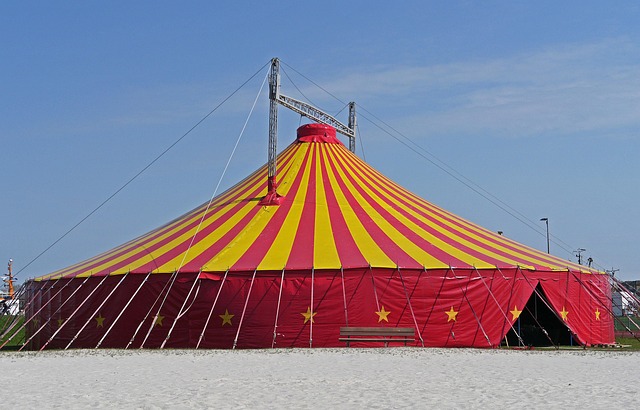Semantic anchor text, clickable words in internal links, improves search engine understanding and user experience. Use specific phrases related to linked content, e.g., "learn more about SEO," to enhance SEO and navigation. Balance keyword usage with readability, incorporating relevant terms naturally for effective internal linking and optimized SEO performance. Regularly monitor link structure using tools like Google Search Console to refine and optimize strategies based on traffic data.
Internal linking is a powerful SEO strategy that can enhance user experience and boost your site’s visibility. This guide offers a comprehensive, step-by-step approach to optimizing internal links using semantic anchor text. From grasping the fundamentals of semantic text to strategically placing links for maximum impact, you’ll discover effective techniques to improve page authority and crawlability. Learn how to balance keyword usage with readability for compelling clickbait text that engages users while boosting search rankings.
- Understand Semantic Anchor Text Basics
- Identify Relevant Content for Internal Links
- Craft Compelling Clickbait Anchor Text
- Balance Keywords and Readability
- Strategically Place Internal Links
- Monitor and Adjust Link Performance
Understand Semantic Anchor Text Basics

Semantic anchor text refers to the words or phrases used in your internal links that appear as clickable text on a webpage. It’s more than just a link; it’s a crucial semantic signal for search engines, acting as a bridge between pages and topics within your website. When crafting these links, understanding the basics of semantic anchor text is vital.
The key lies in aligning the anchor text with the content it points to. For instance, if you’re linking to a page about “SEO strategies,” using terms like “learn more about SEO” or “dive into our comprehensive guide on SEO” provides context to both users and search engines. This semantic optimization is part of a broader internal linking strategy that aims to enhance user experience and search engine understanding, ultimately improving your website’s visibility and performance.
Identify Relevant Content for Internal Links

To optimize your internal linking strategy effectively, the first step is to identify relevant content that can benefit from interconnectedness. This involves a meticulous process of sifting through your website’s existing pages and assets to find pieces that offer valuable related information or support each other thematically.
When selecting content for internal links, focus on using semantic anchor text. This means choosing phrases that accurately reflect the linked page’s topic or purpose, rather than generic terms like “click here” or “more info.” A semantic anchor text strategy not only enhances user experience by providing context for the link but also acts as semantic anchor text tips to search engines, helping them understand the relationships between your pages and ultimately improving your site’s SEO. For instance, if you’re linking from an article about “SEO Best Practices,” use anchor text like “learn more about effective SEO strategies” or “deep dive into our SEO guide.” This semantic anchor text tutorial ensures your internal links are both meaningful and beneficial for all users.
Craft Compelling Clickbait Anchor Text

Crafting compelling clickbait anchor text is an art that can significantly boost your internal linking game. While it might sound counterintuitive, using catchy phrases to link between pages can actually enhance user experience and SEO efforts. The key lies in balancing allure with relevance—enticing readers to click while ensuring the link’s context aligns perfectly with the target page’s content.
When implementing a semantic anchor text strategy, focus on keywords that capture the essence of the linked page. Instead of generic terms like “click here,” try using phrases like “uncover the secrets” or “dive into the details.” This approach not only draws attention but also provides search engines with valuable context. Remember, the goal is to create a seamless transition between pages, making your website’s navigation as intuitive and engaging as possible.
Balance Keywords and Readability

When implementing a semantic anchor text strategy for internal linking, striking a balance between keyword usage and readability is paramount. Semantic anchor text refers to the words or phrases used in your links that convey both the topic and context of the linked page. While it’s crucial to include relevant keywords to enhance search engine understanding, overdoing it can make the link text appear stuffed with keywords, compromising readability for users.
To achieve optimal semantic anchor text optimization, focus on using descriptive and natural-sounding language that aligns with your target audience’s language patterns. Incorporate keywords subtly, ensuring they remain secondary to the primary message of the link. This balance ensures your internal links not only improve search engine visibility but also provide users with a seamless navigation experience. Semantic anchor text tips include leveraging related terms, using active voice phrases, and maintaining a diverse range of anchor text length for a more organic and effective strategy.
Strategically Place Internal Links

Internal linking is a powerful SEO strategy that can enhance user experience and improve your site’s visibility. When strategically placing internal links, focus on using semantic anchor text that accurately represents the linked page’s content. This natural language approach aligns with user search queries and helps search engines understand your site’s architecture.
A good semantic anchor text strategy involves using descriptive phrases that convey the value of the target page. For instance, instead of “click here,” use specific keywords or short phrases like “learn more about SEO strategies” or “explore our latest blog posts.” This not only improves readability but also signals to search engines the relevance between pages, boosting your site’s authority and performance in search results. Implement these tips by analyzing your content for related internal links and ensuring each anchor text is unique, relevant, and keyword-rich.
Monitor and Adjust Link Performance

Regularly monitoring your internal link performance is a crucial step in any SEO strategy, especially when utilizing semantic anchor text. By analyzing which links are driving the most traffic and which pages are benefiting from specific anchor texts, you can make informed adjustments to your strategy. This process allows you to optimize not only the existing structure but also identify potential new opportunities for internal linking.
Use tools like Google Search Console or analytics platforms to track click-through rates and user behavior on your internal links. Pay close attention to the keyword context of these links, as this is where semantic anchor text optimization comes into play. Refine your strategy by incorporating relevant, unique semantic anchor texts that naturally reflect the content of the linked page while ensuring a diverse and natural link profile overall.
